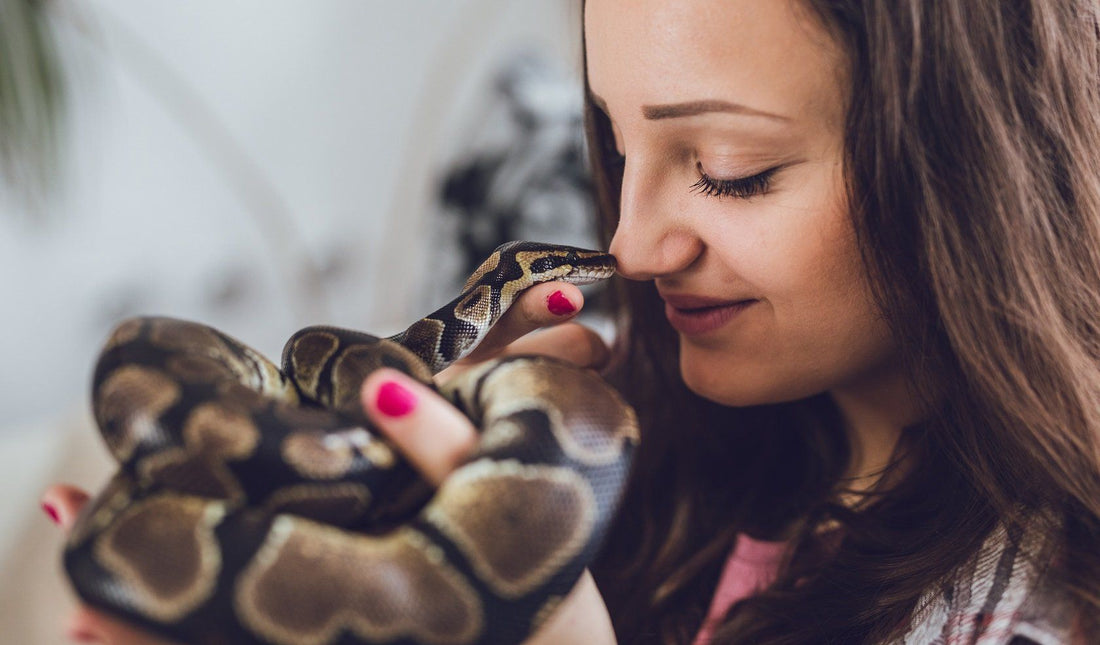It’s not always easy to get a reptile to trust you, but it’s no secret that food is usually the way to their heart. In your efforts to bond with your pet, overfeeding becomes quite easy to do. Combine this with too-small enclosures, minimal enrichment, and a culture that praises and adores chubby pets, and you have the recipe for an obese pet reptile.
Excess weight is not a good thing for reptiles, and it’s definitely not “cute” in any way. Reptiles can develop severe illnesses like fatty liver disease and heart disease due to the accumulation of excessive fat and cholesterol in and around their organs As a result, an overweight reptile suffers low quality of life and a significantly shortened lifespan.
The first step to resolving this problem is learning the difference between a reptile that is at a healthy weight and a reptile that is not. Here’s how to spot reptile obesity in lizards, snakes, turtles, and tortoises:
Lizards
There are many different types of lizards, which means that there are also many different body plans that they can have. This affects the way that they store fat, so obesity looks different on different types of lizards. However, there are some general signs you can look out for.
Too Skinny
- Thin tail, vertebrae visible
- Prominent spine
- Prominent hip bones
- Head looks disproportionately large
Too Fat
- Sunken spine
- “Overstuffed” tail (especially in the case of leopard geckos)
- Prominent jowls/”double chin”
- Head looks disproportionately small
- “Melted wax” appearance due to excess flesh (common in arboreal geckos, ex: crested geckos)
- Belly drags on ground when moving
- Heavy breathing
Just Right
- Spine not clearly visible
- Well-developed tail
- Trim, streamlined appearance
- Belly does not drag on ground when moving (skinks excluded)
Snakes
The tricky thing about detecting obesity in snakes is that they don’t store fat between their muscles and skin — they store it on the inside along with their organs. Considering that snakes are essentially long tubes of muscle and bone, this means that a fat snake often doesn’t look much different from a healthy snake — it’s just a bigger sausage. There are a few tricks you can use, though, to check your snake’s body condition:
Too Skinny
- Head looks too large for body
- Loose skin
- Concave belly
Too Fat
- Head looks too small for body
- Spine is too prominent (ex: ratsnakes) or sunken (ex: pythons)
- Segmented appearance
- Body gets abruptly narrower past the cloaca (“love handles”)
- Separated scales at the widest part of the body
- Body feels “squishy” rather than firm during handling
Just Right
- Smooth, gentle taper from body to tail
- Smooth appearance, no segmentation or wrinkled scales
- Spine is not too prominent
- Body feels firm and muscular during handling
Turtles/Tortoises
Because turtle and tortoise bodies are largely encased in a hard, bony shell, this hides excess fat accumulation. However, it can also make obesity easier to spot, depending on whether you know where to look.
Too Skinny
- Flesh in the armpit and groin areas is sunken when limb is extended
- Feels too light for its size when held
Too Fat
- Soft tissue “billows” outward from between the shell and plastron
- Flesh in the armpit and groin areas still bulges when limb is extended
- Turtle/tortoise can only partially retract into its shell, or not at all
Just Right
- Flesh in the armpit and groin areas is flat when limb is extended
- Turtle can fully retract into its shell as appropriate for the species
Conclusion
Fat by itself isn’t a bad thing, but too much of it is. Excess fat accumulation makes it hard for a reptile to move around, puts strain on their organs, shortens lifespan, and generally reduces quality of life.
Different species carry fat differently, though. Sometimes very differently. Although the above tips are good to keep in mind, what is healthy for one species can be underweight or overweight for another. For example, a boa should never have a python’s thick body, and a bearded dragon’s belly should not drag on the ground like a skink’s.
The best way to check your reptile’s body condition is to look for species-specific examples of what “healthy” looks like. The best way to find photos of healthy reptiles is to look at photos of wild individuals. There’s a common misconception that wild reptiles are unhealthy, but just the opposite is true — most of them are quite healthy, and arguably healthier than the ones kept as pets. For example, they have better muscle tone, a more varied diet, better temperature gradients, and better UVB. When you know what “healthy” is supposed to look like on your reptile, you become able to provide better care for your pet.











